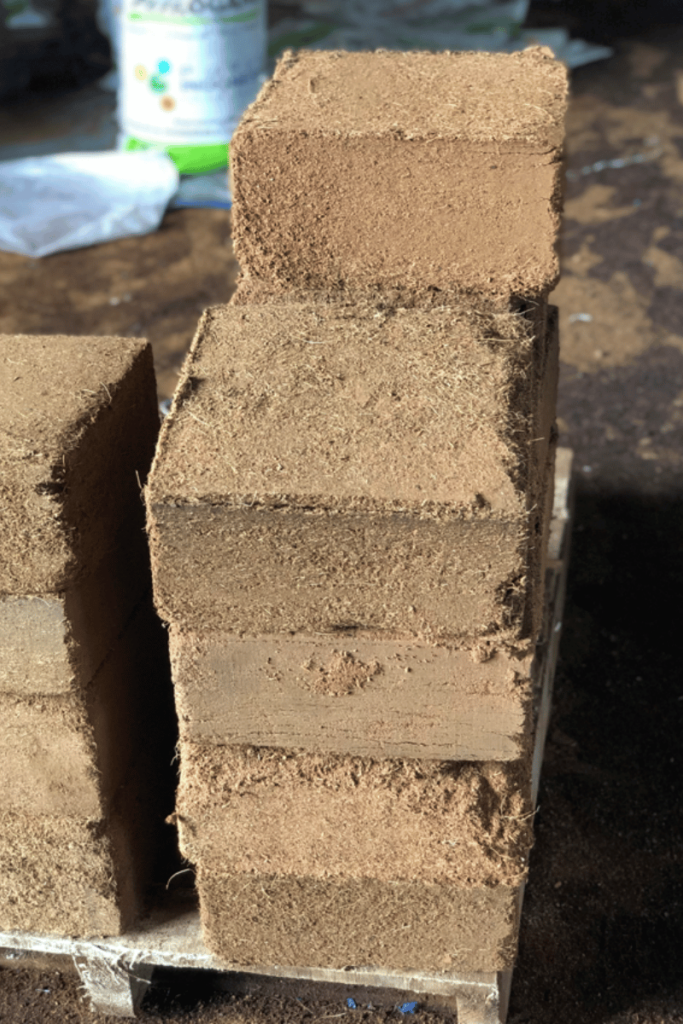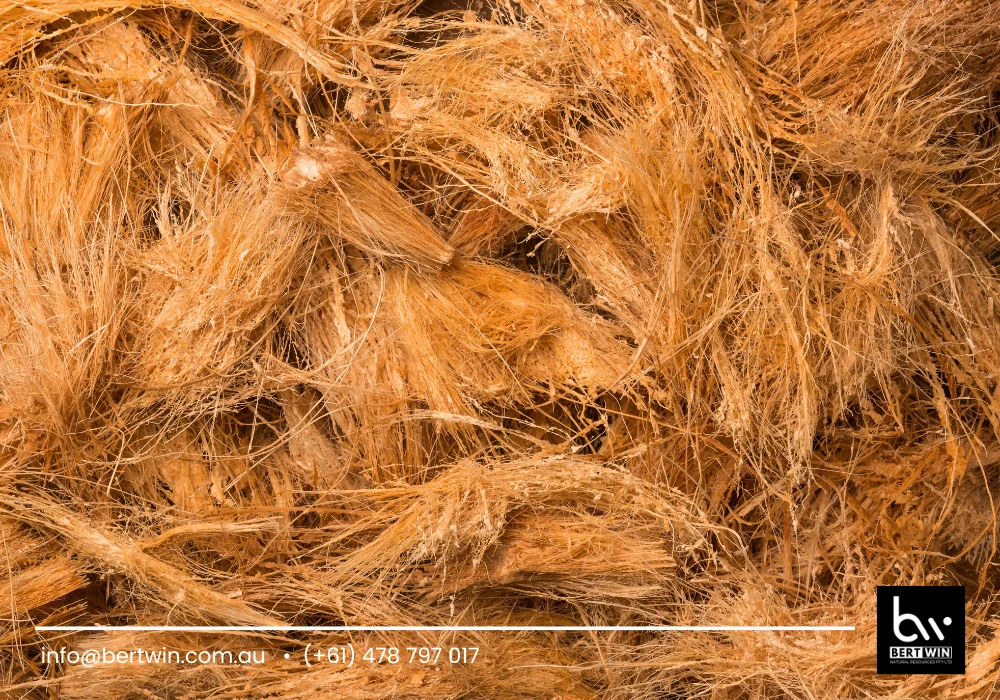Coco peat block has become a crucial innovation in sustainable agriculture as growers increasingly search for reliable and eco-friendly alternatives to traditional soil enhancers. The rising concerns over land degradation, soil fertility loss, and the excessive use of chemical-based growing media have pushed farmers and horticulture industries worldwide to explore better solutions. In this context, coco peat block offers a practical answer to these background challenges by providing a renewable, effective, and versatile growing medium for various agricultural applications.

Understanding Coco Peat Block
What Is a Coco Peat Block?
A coco peat block is a compressed form of coconut coir dust, produced from the outer husk of coconuts. During processing, the long fibers are extracted for use in textiles, ropes, and mats, while the remaining fine particles—known as coco peat—are collected and compressed into dense blocks for efficient packing and shipping. When hydrated, a coco peat block expands several times its original size, transforming into a soft, spongy growing medium with excellent physical properties.
Although often referred to as soil, coco peat is not actual soil. Instead, it is a soil substitute widely used for horticulture, hydroponics, nursery planting, and agricultural production. Its consistency resembles peat moss but with significantly better sustainability, making it a preferred option for environmentally conscious growers.
Key Physical and Chemical Characteristics
Several attributes make coco peat block superior to many traditional planting mediums:
- High moisture retention: It holds water up to eight times its dry weight.
- Excellent aeration: Prevents compaction and supports robust root development.
- Neutral to slightly acidic pH: Ideal for a wide variety of plants.
- Reusable: Can be used for multiple planting cycles if properly sterilized.
- Environmentally friendly: Made from coconut husk waste, reducing landfill impact.
These characteristics have positioned coco peat block as a dependable medium in both small-scale gardening and large agricultural operations.
Advantages of Using Coco Peat Block
1. Superior Water Management
One of the most important advantages of a coco peat block is its ability to hold water efficiently without becoming waterlogged. Its sponge-like texture absorbs moisture and releases it gradually, ensuring that plant roots have a consistent supply of water. This makes it especially valuable in regions prone to drought or irregular rainfall.
2. Enhances Root Aeration
Roots require oxygen to grow effectively. Coco peat block maintains a loose structure even after repeated watering, preventing soil compaction. This ensures that roots continue to receive oxygen, leading to healthier, stronger plant growth. Good aeration also reduces the risk of root-related diseases.
3. Sustainable and Eco-Friendly
Traditional peat moss extraction is known to harm natural peat bog ecosystems, which take centuries to regenerate. In contrast, coco peat block is produced from a renewable resource—coconut husks—that would otherwise be discarded. This makes it a sustainable choice for growers seeking environmentally responsible solutions.
4. Ideal for Soil Conditioning
When mixed with conventional soil, coco peat improves texture, increases drainage, and enhances nutrient retention. It transforms heavy clay soil into a lighter mixture and helps sandy soils retain moisture more effectively. This improvement in soil structure is beneficial for both agricultural fields and home gardens.
5. Versatile Across Agricultural Systems
Coco peat block can be applied in numerous settings, including:
- Hydroponic systems
- Greenhouse farming
- Nurseries and seed-starting trays
- Landscaping projects
- Mushroom cultivation
- Indoor and urban farming
Its versatility makes it an essential component in the growing shift toward modern agricultural techniques.
Coco Peat Block in Modern Farming Practices
1. Supporting Sustainable Agriculture
Farmers worldwide are adopting practices that reduce chemical inputs and conserve natural resources. Coco peat block plays a key role by:
- Reducing water consumption
- Minimizing the need for soil conditioners
- Supporting organic farming systems
- Promoting long-term soil health
As a result, coco peat block aligns with global initiatives toward regenerative and eco-friendly agriculture.
2. Enhancing Nutrient Efficiency
Coco peat has a high cation exchange capacity (CEC), allowing it to hold essential nutrients like potassium, calcium, and magnesium. Rather than letting nutrients wash away, the medium stores them and releases them when needed by plants. This minimizes fertilizer waste and ensures balanced nutrition throughout the growing cycle.
3. Improved Seed Germination Rates
Seedlings thrive in environments with optimal moisture, aeration, and sterility. Coco peat block provides all of these conditions, making it ideal for starting seeds. Germination rates are typically higher compared to natural soil, and seedlings develop stronger root systems due to the supportive structure of the medium.
4. Perfect for Hydroponics
Hydroponic systems rely on growing media that retain moisture without suffocating roots. Coco peat block is widely used in hydroponics because it:
- Balances water retention and aeration
- Resists fungal growth
- Maintains stable physical properties
- Supports nutrient absorption
Its consistency and reliability make it one of the most popular hydroponic substrates globally.
Challenges and Their Solutions

1. Presence of Salts
Some coco peat products may initially contain high sodium or potassium levels. This issue is easily resolved by ensuring the coco peat block is properly washed and buffered during production. Reputable manufacturers always provide pre-washed, low-salt blocks suitable for agriculture.
2. Nutrient Limitations
While coco peat block offers great physical properties, it naturally lacks many essential nutrients. Fertilizers or compost must be added to achieve optimal plant growth. However, once nutrients are incorporated, the medium holds them exceptionally well.
3. Monitoring pH Levels
Most coco peat blocks maintain a stable pH, but periodic monitoring is important for sensitive crops and hydroponic systems. Adjustments can be easily made using standard pH stabilizers.
Growing Global Demand for Coco Peat Block
Shift Toward Sustainable Farming
Increasing global awareness of environmental issues has driven demand for eco-friendly agricultural materials. Coco peat block stands out as a renewable alternative that aligns with green farming initiatives.
Cost-Effective for Commercial Growers
Because coco peat block expands significantly when hydrated, it is economical to transport and store. Large-scale agricultural businesses benefit from reduced logistics costs and long-term usability, since coco peat can be reused multiple times with proper care.
Urban Farming and Home Gardening Growth
With the rise of indoor gardening and urban agriculture, coco peat block has become popular among hobbyists. Its clean, lightweight, and odorless nature makes it ideal for residential environments.
Conclusion
Coco peat block has become an essential component in modern agriculture due to its sustainability, versatility, and reliable performance. As global challenges such as soil degradation and climate change intensify, growers are turning to renewable alternatives to maintain productivity. Coco peat block provides a powerful solution—offering excellent water retention, superior aeration, and environmentally friendly benefits. Whether used for hydroponics, seed starting, or large commercial farming, this medium continues to shape the future of agricultural innovation.
For further information, you may contact WhatsApp at (+61) 478797017 via https://wa.me/61478797017 or email info@bertwin.com.au.
Read more:
